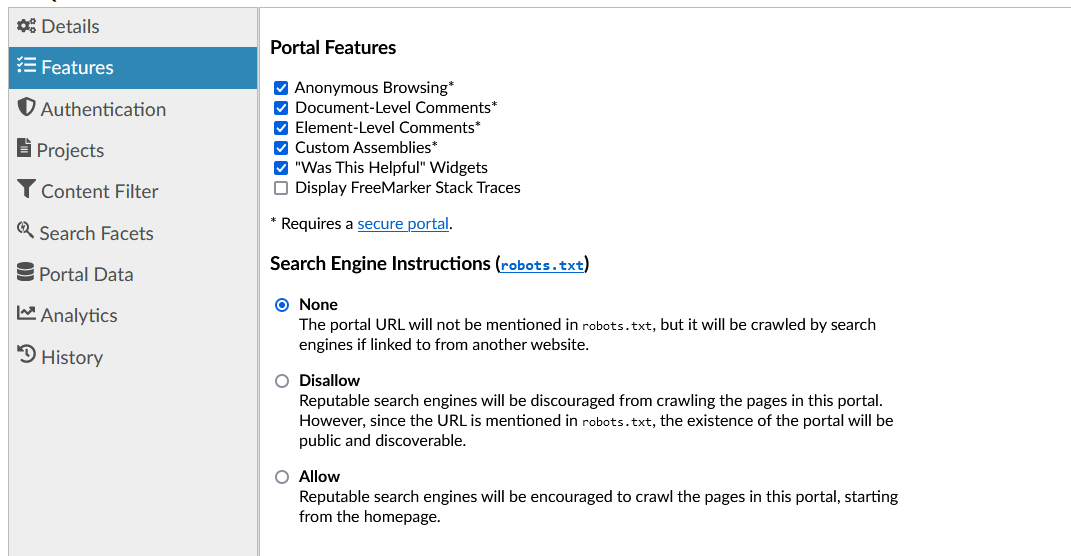Portal Features
Certain portal features can be easily toggled on or off.

Portal Features
This part of the page allows you to control which features are enabled for your portal.
- Anonymous Browsing
- Selecting this will allow your portal to be visible to everyone, including anonymous users. If unchecked, it will require users to log in before viewing content.
- Document-Level Comments
- This allows users who are currently logged in to leave comments on the document itself. This can be useful for noting changes, or whether or not a user finds a particular document should be updated or replaced.
- Element-Level Comments
- This allows users who are currently logged in to leave comments at any level within the document, so that a specific paragraph or image or list could be commented upon.
- Custom Assemblies
- This feature enables users to build custom publications from the DITA topics in the portal.
- “Was This Helpful” Widgets
- At the end of each document, there is a “Was this Helpful” dialog box that allows the user to select ‘Yes’ or ‘No’. This allows the company to better track which documents are being marked, and could help pinpoint areas that users feel could use more improvement.
- Show FreeMarker Stack Traces
- Enable display of Java stack traces in FreeMarker errors and portal error pages.
Note: Displaying Java stack traces can be a security vulnerability in some situations. Before enabling this feature, verify compliance with your company security policy.
Search Engine Instructions
This section allows you to specify whether and how your portal is configured in the
/robots.txt file, used by reputable search engines and crawlers to
determine how and whether to index certain pages in a portal.
- None
- The portal path will not be mentioned in
robots.txt. - Disallow
- The portal path will appear with a
Disallowdirective inrobots.txt. - Allow
- The portal path will appear with a
Allowdirective inrobots.txt.